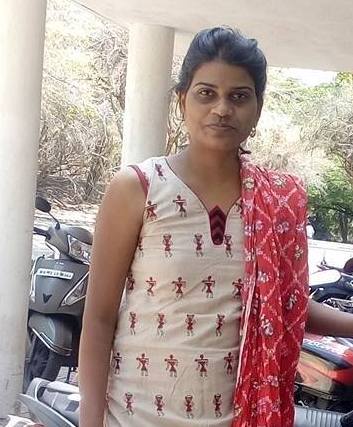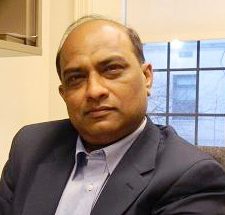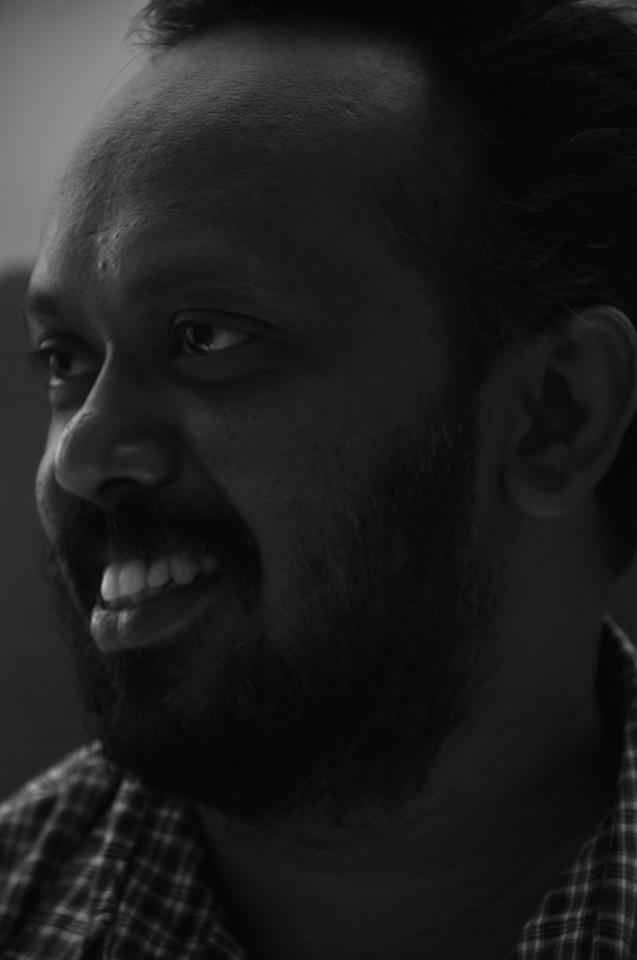Sandhya Gawali
 Maratha Community has been organizing massive silent rallies (muk morcha) in various districts in a strong display of restlessness. The immediate reason behind the march is the brutal rape and murder of a teenager Maratha girl in kopardi, Ahmadnagar district, Maharashtra. The three suspects in this case belong to the Dalit community.
Maratha Community has been organizing massive silent rallies (muk morcha) in various districts in a strong display of restlessness. The immediate reason behind the march is the brutal rape and murder of a teenager Maratha girl in kopardi, Ahmadnagar district, Maharashtra. The three suspects in this case belong to the Dalit community.
Firstly, we need to ask what constitutes ‘Maratha community? The Maratha community itself is not a homogeneous community. There is no solid or reliable information available which presents Maratha community’s numbers. Maratha caste is a cluster of Marathas and 9 Kunbi castes. Prachi Deshpande stated in her paper ‘Caste as Maratha’ that in 17th century the Marathas came to light. Lord Harris, Governor of Bombay used the term ‘Maratha’ to denote all Marathi Speakers. In 1931, Narayan Lokhande appealed to people that don’t mention your caste instead call yourself a Maratha. Thus, there was a very high population of Marathas.
Nine Kunbi castes were included as Maratha. In 1920, Yadav Gawali filed a petition stating that they should be included in the Maratha caste. Non-Brahmin movements point out multiple imageries of what and whom the term Maratha represented during the colonial period. There are many OBC castes who claim to be Maratha/ Kshatriya. For example, Maratha Kshatriya Parit Sangh was established as an organization in 1950s but still they use this identity. In Alandi, Pune they have organized matrimonial networks as well. Recently when I conversed with certain Maratha girls and boys they defined Marathas as people who draw their ancestry from Shivaji Maharaj. Further, they think Maratha indicates those who live in Maharashtra and speak Marathi. For them Kunbi, Kumbhar, Parit are all Marathas, only their occupation is different etc. Thus, definitions of ‘Maratha’ are multiple and often contested. The term has spread quite often as a consequence of caste solidarities.
There are very large numbers of low caste groups in North India that claim Rajput or Kshatriya descent. For example, a writ petition on behalf of several de-notified communities filed in 1975 in the High Court of Punjab argued that they had wrongly included in the category of Scheduled castes as they were in fact Rajput not untouchable (Anuja Agrawal, 2004).
As Rajeshwari Deshpande argued in ‘Kunbi Maratha as OBC’ that Kunbi-Maratha is a category invented by Marathas for their political interest. In the period of Congress dominance; the Marathas and the Kunbi were projected as being one and their combined numerical strength in Maharashtra’s politics was inflated.
Coming back to my primary concern, it should be noted that historically Maratha women were never allowed to actively participate in public spaces. However, the recent protests have seen remarkable participation of women, small children, and school/college going girls. They are carrying placards and saffron flags, wearing caps displaying slogans like ‘Ek Maratha Lakh Maratha’ to condemn the Kopardi incidence. Considering this change, can it be said that they (Maratha women) are challenging structures through becoming part of Maratha Kranti Morcha? Can we now assume that Maratha men have changed their perceptions on Maratha women’s political participation since they are giving more space to women to express their views in morchas? Or that Maratha men are giving equal opportunities to Maratha women and young girls in the Morchas and its leadership?
Maratha is a dominant caste in Maharashtra known for its dominant position with regards to land control, politics, educational institutes, sugar factories and other cooperative sectors. Marathas claim Kshatriya status and feel proud about the same. The whole Kshatriya/Maratha identity is dependent on controlling its women’s sexuality, maintenance of patriarchal structures and power relations often mediated through land ownership.
Marathas follow values of feudal system and are tightly bound with old customs and traditions and Maratha women are forcefully restrained into it. As Dr Ambedkar stated ‘women are the gateways of caste system’, we have to look how Maratha women are controlled by their men to maintain clan’s purity and Maratha / Kshatriya status. What does Kshatriya status mean to Maratha women? This needs to be identified.
Meenal Jagtap, in her book ‘Status of Maratha women’ tried to understand what Maratha women think about their caste, what are the meanings of being a Maratha woman? She underlines that, Maratha women feel proud of being a Maratha. They think Marathas belong to Shivaji Maharaj’s clans of cultivators and warriors. Maratha women define Maratha as those who do not cross the threshold, those who do not speak with unknown men or even with their husbands, those who abide by their men’s wish, Maratha means ‘Deshmukh’, big farmers, stay with husband without complaints, those who do not remarry even after being deserted or widowed. To put it briefly, Maratha women underline the caste characteristics. Brahmanical patriarchy conceptualizes the ‘Maratha caste’ in their minds.

Maratha women’s socio-economic status
We can broadly divide Maratha community into three sections. The first section consists of elites who follow feudal values, second section consists of middle classes who engage in mindless imitation of elites and third section consists of laborers. Even though these three sections are different, they all try to retain power over others by maintaining gender inequality, unequal power relations with other lower castes and control over women’s sexuality. Maintaining family’s honour is supposed to be women’s primary duty/responsibility. Women stay at home and fulfill household duties glorified by community. ‘Gruh-Laxmi’ should stay at home and this underlines men’s masculinity. On the other hand, in rural areas several Maratha women work in fields. With rural outmigration of men, the entire responsibility of the household and the field are shouldered by women. Also many Maratha women work outside their household to aid family income.
Various rules are imposed on women to retain the status of their caste. The strict practice of endogamy is one among them. The anxiety and fear of women entering into exogamous relationships is so intense that after 10th or 12th std many girls are forcefully married by their families. Maratha community believes that divorce is a harmful/stigma for their caste status that’s why many women stay with their husbands in spite of continuous harassment from husband. (Pawsane jhodle aan Navaryane Marle sangaych kunala) (there is no recourse from the beating of my husband and the anger of rain) this kind of statements (proverbs) normalize violence on women and the question of violence remains unanswered. There are persistent negative attitudes towards remarriage of widows or divorcees hence many young widows or divorcees stay with their parental family and live in abject pain. Cases of remarriage are very few.
Women are unable to access higher education due to lack of importance of education. The common perception about educating women among Marathas get reflected in the oft-repeated expression that ‘if you (a woman) is educated, you will not get suitable groom’ or ‘after marriage you have to make bread so what is the benefit of getting education’. Maratha women face these kinds of problems in their day to day life and for community’s bogus status all these restrains are imposed on women.
Similar picture came in to fore during the Maratha morchas. Maratha women still have limited presence in public space and yet all of a sudden after Kopardi incidence took place, Maratha women started coming on roads and articulating their opinions strongly, raising questions. But what was the nature of these questions raised by Maratha women is something to be critically evaluated.
The morchas were properly planned and organized. Maratha community came together under the banner of Maratha Kranti (Muk) Morcha. They well-planned details such as: who will submit the demands statement, who shall speak and put demands of Marathas, who will lead the morchas, what will be their dress code, volunteer’s training etc. If you listen to the speeches of various adolescent girls you will find similarities, same anger and same method of delivering the speeches/statements. Not only young girls but small school-going children are participating in the Morchas. These children were giving slogans such as: Ek Maratha Lakh Maratha (one Maratha one lac Maratha), Aamacha Nad Karaycha Nay (do not mess with us). Through all this, patriarchal values and caste identity are becoming strong, acute and sharp.
Pradeep Salunkhe in his booklet called ‘Maratha Kranti Morcha ka va kashasathi?’ advises Maratha men as follows “tell your wife that if a news reporter comes to her and asks her why did she joins the morcha? She should never give answers such as ‘ I came with my neighbor’ or ‘ I don’t know’… she should tell the reporter that she has come here for the Maratha community’s demands and for justice for the victim’
Women’s body as Symbol of caste representation
The body is the tool of protest par excellence. Most political protests are enacted through the body. The body is not only key vehicle of protest but also serves as a symbol, as a text that conveys political meaning. (Barbara Sutton) When Maratha women came on the road wearing Ek Maratha lakh Maratha cap, saffron saris they underlined their socio-political and cultural values, consolidating their caste identities further.
Women are seen as central to the community. They are the negotiators and representatives of the communal interest and speak as the voice of their community in conflicts. In the context of this morcha, young girls and women speak as the voice of Maratha community. They mainly speak about community’s brother’s or farmer’s problems but they don’t speak about what kind of problems Maratha women face while entering the educational field, male out-migration, difficulties in finding employment, dowry, attitudes towards divorce remarriage, sex selection, women’s status in decision making processes, status of women in public and private sphere etc.
Gainful employment and ‘career’ are seen as the exclusive domain of the Maratha man as he is supposedly the bread winner of the family. The statements of the young women who participated in the Morchas supported such notions. Women’s issue in the rally is only confined to sexual assault of Maratha women by men of other castes. Women are pushed into leadership roles to protect the community’s masculine interests. Marathas are looking for short term political gains and not focusing on comprehensive issues of gender equality and justice.
We need to understand that streets are gendered spaces that are mediated by caste. When dalit women step out on the street for their rights they are seen as transgressing prescribed limits and when upper caste women step on the road (with their caste men!) their ‘sense of being wronged’ and their appropriation of public space is immediately made legitimate.
Pradeep Salunkhe’s booklet titled ‘Maratha Kranti Morcha Ka va Kashasathi’ (‘Why do we need Maratha Kranti Morcha?’) underlines that in the past decade Marathi movies systematically targeted Marathas (men) as villain, oppressors and casteists. Movies are misrepresenting Marathas. According to the booklet, Sairat portrayed one of the extreme forms of such ‘misrepresentation’. Sairat‘s storyline which builds on the inter-caste love of a Maratha girl and a Pardhi boy has severely disturbed the author of the booklet. Such cultural representations through cinema have also influenced the Morchas.
I would like to give two examples of women’s status on decision making process. When the ‘planning meeting’ for Maratha Morcha took place in our area (Shivane, Pune) women were not called for the meeting. There was not a single woman present for the meeting. I would like to share my experience being a member of a whatsapp group formed with the intention to mobilize Marathas for the Morcha. When I showed interest in being a member of the whatsapp group my male friend who is admin of the group laid down the conditions that I should ‘change’ my profile picture on whatsapp. The whatsapp group consisted of 252 members. All were male and I am the one who was a girl. Both examples show the subsidiary status of women in planning meetings i.e. decision making.
In the Whatsapp group of Maratha Morcha there were huge numbers of messages aimed at Maratha women. Men sending these messages usually use the story of Jijabai (the mother of Shivaji Maharaj) as an enlightened mother worthy of emulation, who fought for the Hindu nation through his son Shivaji, by giving him values, ideology, strength and patriotism. Girls are taught that they must aspire to become like Jijabai.
In a video posted in the Whatsapp group, a Maratha girl fights a group of young men who try to sexually harass her. The source for her ‘strength’ to fight back is supposedly Jijabai. Jijabai’s story is narrated to this girl by an elder man in the video, immediately inspiring her to act against the harassers.
Jijabai emerges as an exemplary figure who carves out roles for not just women but also men in the historical creation of an imagined ‘Maratha Hindu nation’. Jijabai is considered an ideal mother. She is a nationalist figure for the Marathas, dishonoring this motherly figure would mean dishonoring the imagined nation. Thus, many school going girls, young girls and women join the Morchas wearing T-shirt, Jeans, Caps with slogans such as ‘One Maratha Lac Maratha’ They hold saffron flags, which underlines their caste identity in apparently modern attires. They confine their display of strength and define their boundaries by calling themselves ‘daughters of Jijau’.
The issue of linguistic violence in the group needs special mention. Women of particular castes are sexualized through verbal abuses. Linguistic violence is used openly against women to violate them. On Maratha Morcha whatsapp group people usually send messages such as: yes our fathers kept Rand (mistresses, sexually available women) but should I tell you from which corner of the village?
Similarly, Dalit men have made comments such as – when you kept our women that time you didn’t feel disrespect but when a Maratha girl went into the sugar cane field with a Dalit boy (reference:Sairat) you feel insulted?
On either side we find men arguing and abusing each other on the realm of women’s bodies and use abusive words to humiliate each other. Such arguments play a very important role in reproducing dominance upon women’s bodies. The whatsapp groups acted as pressure groups which mobilized Marathas in large numbers created pressure group. Similarly, Morcha organizers effectively used social media to spread messages about the demands, and dissemination of the published booklet called ‘Maratha Kranti Morcha ka va kashasathi?’
Local news papers like Lokmat did not publish news about the Morcha therefore whatsapp group administrators appealed to everyone in the group to boycott the newspaper. Young Marathas were pressurized to participate in the morcha. Non-participation often meant isolation from community and friendship circuits.
In short, one can say that the publication of Maratha Kranti Morcha booklet or giving space to Maratha women in Morchas were well-oiled strategies to send out the message that Maratha men are not oppressive but now a days they are being exploited.
We have to deeply study the politics behind such a posture. The community merely used its women to sidestep their identity as oppressors and transform it as ‘progressive Marathas’. Caste identities built in the image of the men of the community hijacked gender issues. Sexual violence became secondary in both cases. The question of rape provided a legitimate anchor to articulate male interests in the Maratha community. Women were reduced to mere agents of their men.
~
References
Meenal Jagtap, 2010, Maratha Striyanche Sthan, Sugawa Publication, Pune
Meenal Jagtap, Maratha Jaat Aani Pitrusatta, Sandarbhasahit Streewad, Shabd Publication, Pune, Pg. 402-416
Pradeep Salunkhe, 2016, Maratha Kranti Morcha Ka va Kashasathi?, Panchafula Publication, Aurangabad
Anand Teltumbde, 10 years of Khairlanji, Economic Political Weekly, vol.51, issue no. 36, 2016
Barbara Sutton, 2007, Naked Protest: Memories of Bodies and Resistance at the World Social Forum, Journal of International Women’s Studies 8 (3), 139-148
Ed. Leela Dube, “Caste and Women”, Anupama Rao,Gender and Caste, Kali for Women, New Delhi, 2003
Maitreyi Krishnaraj,Understanding Violence against women, Economic Political Weekly, vol.42, issue no. 44, 2007
Kalyani Devaki Menon, 2005, “We Will Become Jijabai”: Historical Tales of Hindu Nationalist Women in India, Association for Asian Studies, Vol. 64, No. 1 pp. 103-126
Ed. Sumit Sarkar and Tanika Sarkar “Caste in Modern India”, Prachi Deshpande, Caste as Maratha, Social Categories, Power and Region in South Asia, vol. 2, Permanent black, Ranikhet 2014, pg. 200-233
Prachi Patil, Understanding sexual violence as a form of caste violence, Jawaharlal Nehru University, Delhi https://josi.journals.griffith.edu.au/index.php/inclusion/article/view/632/761
Vasanth kannabiran and kalpana kannabiran, Caste and Gender: Understanding Dynamics of Power and Violence, “De-eroticizing Assault: Essays on Modesty, Honour and Power”, Kolkata: Stree, 2000
http://indiatoday.intoday.in/story/maharashtra-legislators-blames-sairat-for-rising-incidents-of-rapes/1/718977.html
https://kellogg.nd.edu/faculty/research/pdfs/Jaffrelot.pdf
http://www.dnaindia.com/india/report-ban-sairat-cut-off-limbs-of-rapists-say-mlas-2236279
http://www.huffingtonpost.in/sanjukta-basu/maratha-uprising-how-caste-hijacked-a-gender-issue/
https://www.youtube.com/watch?v=ZY2XSYCn0tg
http://www.loksatta.com/lekha-news/challenges-in-front-of-maratha-girls-1324169/
https://www.youtube.com/watch?v=TeqV9JBOBH8
~~~
Sandhya is a research scholar with KSPWSC, Savitribai Phule Pune University.










